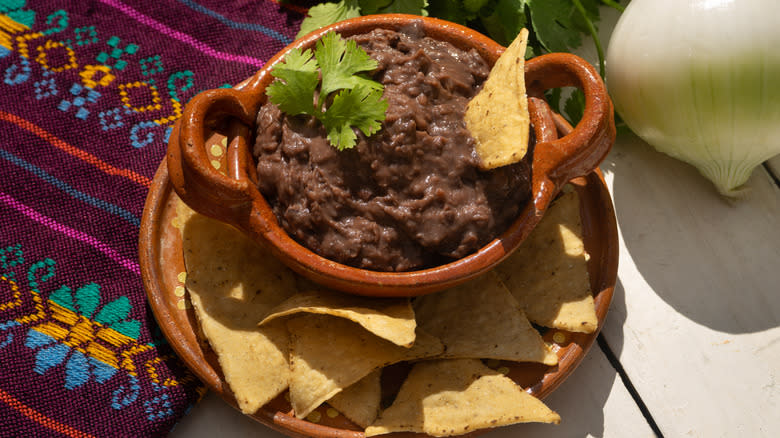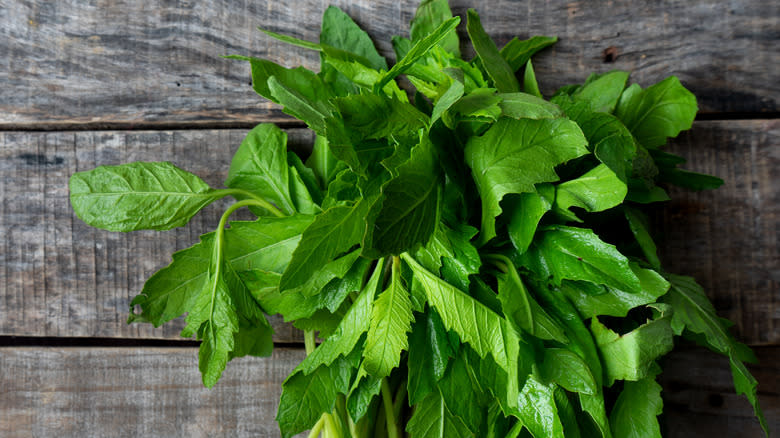The Aromatic Ingredient You Need To Improve Canned Refried Beans

Whether you're dining in a Mexican restaurant, taqueria, or from a street cart, refried beans are likely on the menu. Traditional Mexican restaurants often elaborate their refried beans with lard for a savory, rich upgrade. Canned refried beans, while convenient, are considerably less flavorful than their homemade or restaurant-made counterparts. But lard isn't the only restaurant-worthy upgrade for refried beans. Use epazote for an aromatic addition that's as flavorful as it is authentic.
Epazote is an herb and a native crop as essential to indigenous Mexican cuisine as corn, chili peppers, and tomatoes. Its unique and pungent flavor is something like a cross between oregano, anise, and mint, making it the ultimate savory aromatic to infuse broths, season meats, or blend into salsas. It complements equally robust flavors like chilies, but is also strong enough to single-handedly brighten ultra-rich dishes like cheese quesadillas.
Epazote is a common seasoning for a pot of pinto or charro beans, providing a zesty, aromatic complement to their earthy richness while standing up to the intensity of the spices, chilies, and meat stewed along with them. Since stewed beans are essentially the precursor to refried beans, epazote has more than proven itself the perfect candidate to add flavor to canned refried beans, Furthermore, epazote is a longstanding herbal remedy for digestive problems. So, not only will it add a distinctly delicious flavor to refried beans, but it should also help prevent them from becoming the musical fruit we used to sing about as children.
Read more: The 15 Healthiest Chip Brands, Ranked From Worst To Best
How To Add Epazote To Canned Refried Beans

Epazote consists of leaves and stems, both of which are used to season food. The stems have the most concentrated flavor, while the leaves are more subtle and eaten like a leafy vegetable in cooked dishes. Like bay leaves, epazote stalks and leaves release their aroma when heated, which is why recipes drop both into soups and stews. You'll want to remove epazote stems from the finished dish due to their hard texture and bitter taste. Epazote leaves will lose their intense flavor the longer they're cooked and wilt into delightfully melt-in-your-mouth ingredients.
You can thus take the bay leaf approach to season your refried beans with epazote by adding the stems and leaves to a steaming pot of canned refried beans for the final minute or two of its cooking time. Put a lid over your refried beans to wilt the leaves and trap the aromas from the stems. Then promptly remove the stems before serving the beans.
Epazote tastes delicious with tomato-based broths, so if your refried beans are too thick and too bland, a dash of tomato juice or salsa roja and epazote will be a great flavor duo. Since epazote is commonly added to quesadillas, epazote-infused refried beans will taste delicious topped with cotija cheese or used in a bean dip with melted panela or queso oaxaca.
Read the original article on Tasting Table

